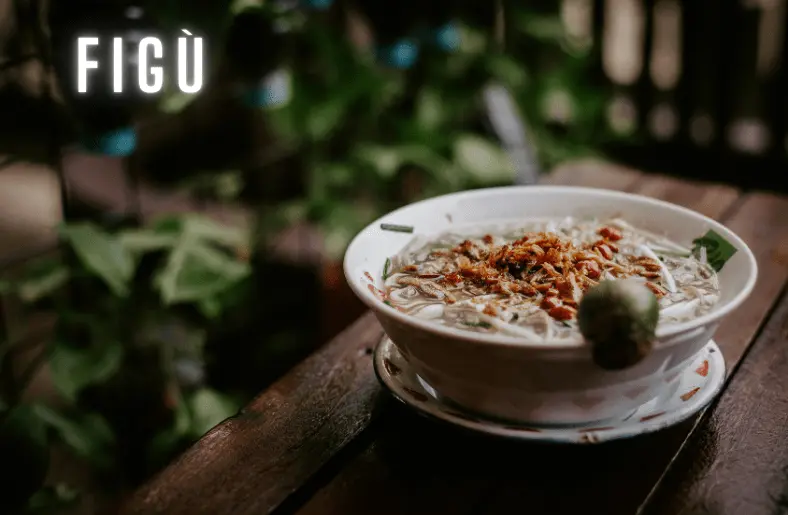Figù, or figs, are fascinating fruits with a rich history and distinctive qualities. They come in various colors, including green, purple, and black, and offer a unique texture and flavor. Fresh or dried, figs add versatility to sweet and savory dishes, making them a global favorite. Understanding their nutritional value is crucial since figs are packed with vitamins and minerals that provide significant health benefits. For example, they supply dietary fiber that supports digestion and heart health. Furthermore, figs are rich in antioxidants that fight oxidative stress. By incorporating figs into your diet, you can boost your overall nutrition and well-being. Recognizing these benefits enables you to make informed choices that promote a healthier lifestyle. In short, figs not only enhance your meals but also contribute positively to your health.
What is Figù?
Figù, commonly known as figs, belongs to the Moraceae family, which includes over 750 species. These small, pear-shaped fruits come in various colors, such as green, purple, and black. Fresh figs feature a chewy texture with crunchy seeds. Dried figs offer a sweeter, denser flavor. Scientifically, figù is classified as Ficus carica. Cultivators have grown figs for thousands of years, with ancient Egyptians, Greeks, and Romans all valuing them. Today, people enjoy figs globally for their sweet taste and versatility. You can eat them fresh, dried, or incorporate them into recipes. Figù’s unique flavor and health benefits make it a valuable fruit in modern cuisine. Understanding figù reveals its rich history and ongoing importance in cooking and nutrition.
Nutritional Profile of Figù
Figù offers a rich nutritional profile that supports overall health. Firstly, figs are high in essential vitamins, such as A, B, and K. Secondly, they are packed with minerals, including potassium, magnesium, and calcium. These nutrients contribute to bone strength and muscle function. Additionally, figs contain dietary fiber, which aids in digestion and prevents constipation. They also boast antioxidants like flavonoids and polyphenols, which combat oxidative stress. Moreover, figs have a low glycemic index, making them suitable for managing blood sugar levels. Consequently, they provide a natural sweetness without causing blood sugar spikes. Whether consumed fresh or dried, figs offer numerous health benefits. Thus, incorporating them into your diet can enhance overall well-being and nutritional balance.
Health Benefits
-
Digestive Health Improvement
-
Figù is high in dietary fiber, promoting healthy digestion and preventing constipation. Consequently, this fiber supports gut health and regular bowel movements. Moreover, figs contain prebiotics that aid digestion by fostering beneficial gut bacteria. Thus, they contribute to a well-functioning digestive system.
-
Antioxidant Protection
-
Figs are rich in antioxidants like flavonoids and polyphenols. These substances aid in the reduction of inflammation and oxidative stress. As a result, figs protect cells from damage caused by free radicals. Therefore, consuming figs supports overall cellular health and may lower the risk of chronic diseases.
-
Heart Health Support
- Figù contains potassium, which helps regulate blood pressure. Additionally, figs offer dietary fiber that reduces cholesterol levels. Consequently, these benefits support heart health and may lower the risk of cardiovascular issues. Including figs in your diet can contribute to a healthier cardiovascular system.
Culinary Uses
Figs offer a wide range of culinary uses, enhancing both sweet and savory dishes. Fresh figs add a natural sweetness and unique texture to salads and cheese platters, making them a delightful snack or garnish. When baked, figs bring moisture and richness to cakes, cookies, and bread, elevating their flavor profile. For savory dishes, figs are excellent when paired with meats or cheeses, adding a gourmet touch to your meal. Additionally, they can be incorporated into sauces and glazes, providing a sweet and complex flavor. This versatility allows figs to fit seamlessly into various recipes, transforming ordinary dishes into extraordinary culinary experiences. Whether you’re looking to sweeten up a dessert or add depth to a savory dish, figs are an indispensable ingredient in modern cooking.
Growing and Harvesting Figù
Growing and harvesting figù is a rewarding process. First, plant fig trees in well-drained soil and sunny spots. They thrive in warm climates, so ensure consistent sunlight and protection from frost. Watering regularly is essential, particularly in dry seasons. Pruning fig trees helps maintain their shape and encourages fruit production. When it comes to harvesting, pick figs when they’re fully ripe. Ripe figs are soft and slightly wrinkled. Gently twist them off the branch to avoid damage. Fresh figs should be consumed promptly or stored in the refrigerator. Consider drying or preserving figs for long-term preservation. By following these steps, you’ll enjoy a bountiful harvest of this delicious fruit. Proper care and timely harvesting ensure the best quality figs for your enjoyment.
Figù in Modern Health Trends
It has gained prominence in modern health trends for its numerous benefits. To begin with, figù is celebrated in diets like Mediterranean and paleo. These diets highlight its nutritional value and health perks. Additionally, figù’s antioxidant properties make it a popular choice for wellness enthusiasts. Many health food products now feature figù, capitalizing on its benefits. Consequently, figù is often included in supplements and health drinks. Transitioning to a healthier lifestyle often involves incorporating figù into daily meals. Notably, figù offers a natural sweetness, making it a healthier alternative to refined sugars. As awareness of its benefits grows, more people are discovering figù’s versatility and health advantages. Embracing figù is an easy step towards better health and well-being.
Buying and Selecting
When buying figù, start by examining its appearance. First, look for figs that are plump and soft. Avoid figs with blemishes or wrinkles, as they might be overripe. Next, smell the figù; it should have a sweet, fruity aroma. Fresh figs should be slightly sticky to the touch. Additionally, consider the color; ripe figs often show deep, rich hues. While shopping, remember that figs can vary in size and shape. Select figs based on your intended use, whether for eating fresh or cooking. Also, choose figs that are in season for the best quality. Store figs in a cool, dry place if you plan to use them soon. For longer storage, keep figs in the refrigerator to maintain freshness.
Common Myths
Many myths surround figù, often leading to confusion. Firstly, some believe figù is difficult to grow. In reality, it thrives in warm climates with minimal care. Another common myth is that figù is only suitable for desserts. However, figù adds flavor to both savory and sweet dishes. Additionally, some think figù is high in sugar and unhealthy. Yet, it offers various health benefits and a low glycemic index. Furthermore, there’s a misconception that figù is not versatile. On the contrary, figù can be used in a wide range of recipes. Lastly, people often assume figù has a short shelf life. Proper storage methods, such as refrigeration, can extend its freshness. By debunking these myths, you can better appreciate the versatility and benefits of figù.
Future of Figù
The future of figù looks promising with several exciting trends. First, advancements in agriculture are improving figù cultivation. Innovative techniques enhance yield and quality, meeting growing demand. Additionally, figù’s role in health trends is expanding. More health-conscious consumers are embracing its nutritional benefits. Furthermore, figù’s culinary versatility continues to inspire chefs. New recipes and dishes featuring figù are emerging. Additionally, sustainable practices are becoming more common in figù farming. Farmers are adopting eco-friendly methods to preserve resources. As global interest in figù grows, its market presence will likely expand. Emerging markets are beginning to explore figù’s potential. Finally, ongoing research will uncover new benefits and uses. The future of figù promises growth, innovation, and increased appreciation.
Also Read: Pollaste: Eco-friendly Culinary Innovation
Conclusion
In conclusion, figù is a remarkable fruit with numerous benefits. It offers essential nutrients and health advantages. Additionally, figù’s versatility enhances various culinary creations. Moreover, understanding figù’s growing and harvesting processes supports better cultivation practices. Looking forward, figù’s role in health trends and sustainable farming is expanding. Furthermore, addressing myths and embracing new knowledge improves our appreciation of figù. Ultimately, figù’s future appears bright, with continued innovation and global interest. Therefore, integrating figù into your diet and lifestyle can be highly beneficial. As research progresses, new uses and benefits will likely emerge.




